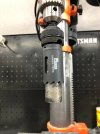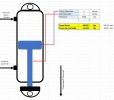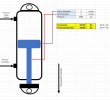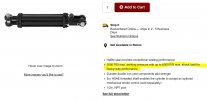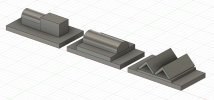We really NEED other folks to chime in here who actually have experience with a forging press. Remember, I'd never even seen a forging press until 3 months ago. All I know is what I've learned by reading and using a press. BUT, here goes what little I "think" I know about dies and their use.
7" wide - that means a 1/2" on each side will be for the holder leaving 6" of die space? That's a good amount. The stress is best centered below the ram - if the billet is placed to one side it will put a twisting torque on the slider plates on each side and it's possible to get the sliders jammed - or so I've been told. In your case with a 2" rod, that puts the max distance from center of rod to stress perhaps 1-1/2", or perhaps more realistic 2-1/2" which is 5" which is most all the 6" space you've got available. I think you're in good shape to use the full 6". I only mention the above because I'd never really thought of the possible issue until it was mentioned to me.
On the squaring dies - I'm thinking it would be good to have 2 sizes, one that's about 1" on each diagonal for smaller stuff, like making a square billet, then octagonal shape. My squaring die is 1" on the diagonal and I can squeeze a 1-1/2" canister just fine. If you're using a larger canister you might wish a larger squaring die. I would have it running the full 4" width as you have. Stacy mentioned if the canister is 2" sq, then a 1-1/2" squaring die is about right for the amount of "squish" that is needed. Depending on how thick the angle to form the "Vee" you might wish to put a rod or something in the empty space for support.I positioned the angle so the Vee opening was up, then welded a couple of bars across the "Vee" for a little extra support. Not sure why you need the 1/4" plate between the angle and the base - is there a reason?
On the combo die - I'd have the flattening portion extending the full 4" width rather than the narrow die shown. Unless you've got lots of 1/2" plate laying around I'd look for 3/8" thickness to save a bit of money. The base is fully supported by the bottom of the die holder and doesn't really need all the extra support of 1/2". My press uses only 1/4" material for the base, but the die is usually 1/2" to 1" thick depending on design and is what does the actual support.
Again, allow me to emphasize again how little experience I have with a forging press. I'd LOVE to have BillyO, Weo, Stacy, Fitzo, or any of several other folks who have used a forging press with MUCH more actual knowledge than I have comment to be sure I'm thinking correctly.

